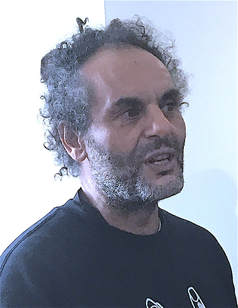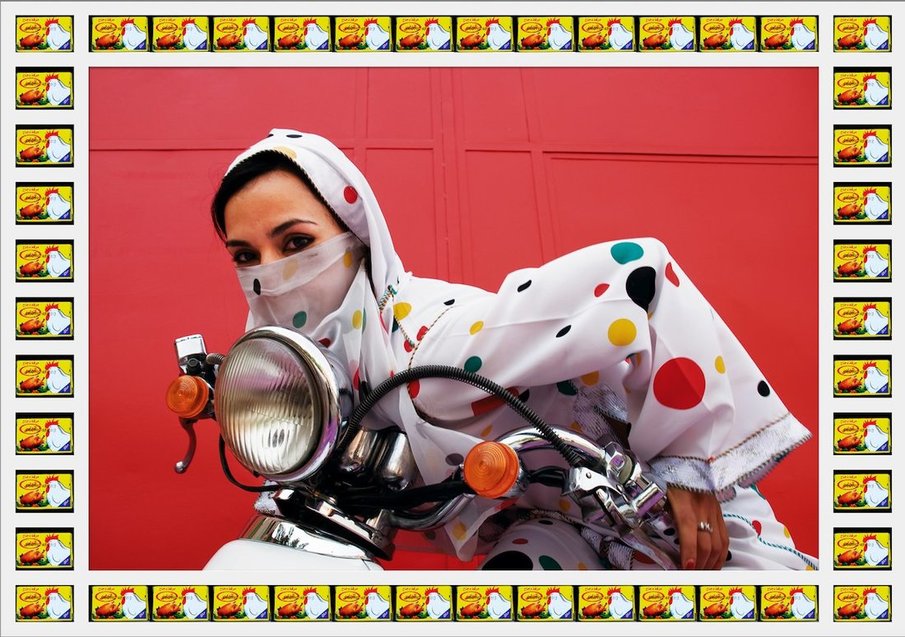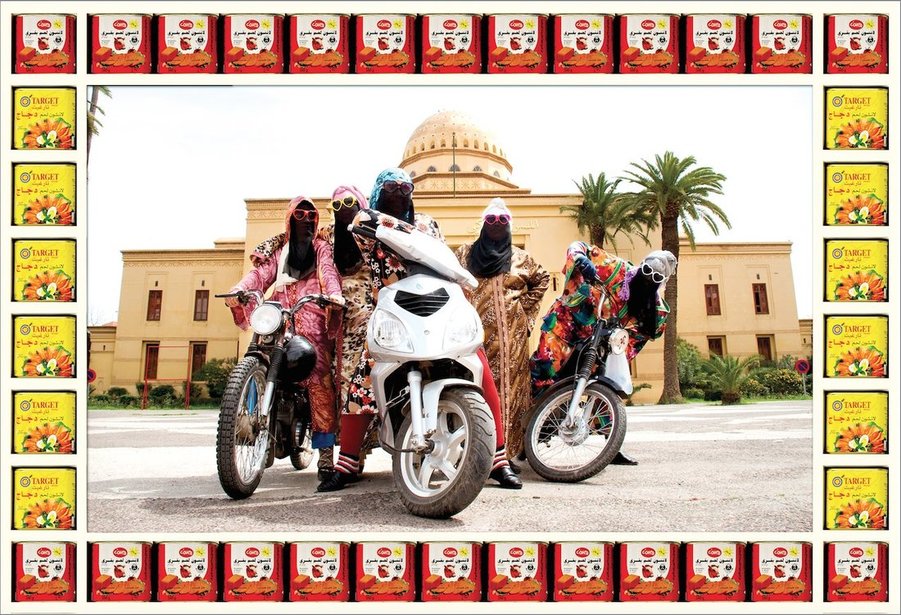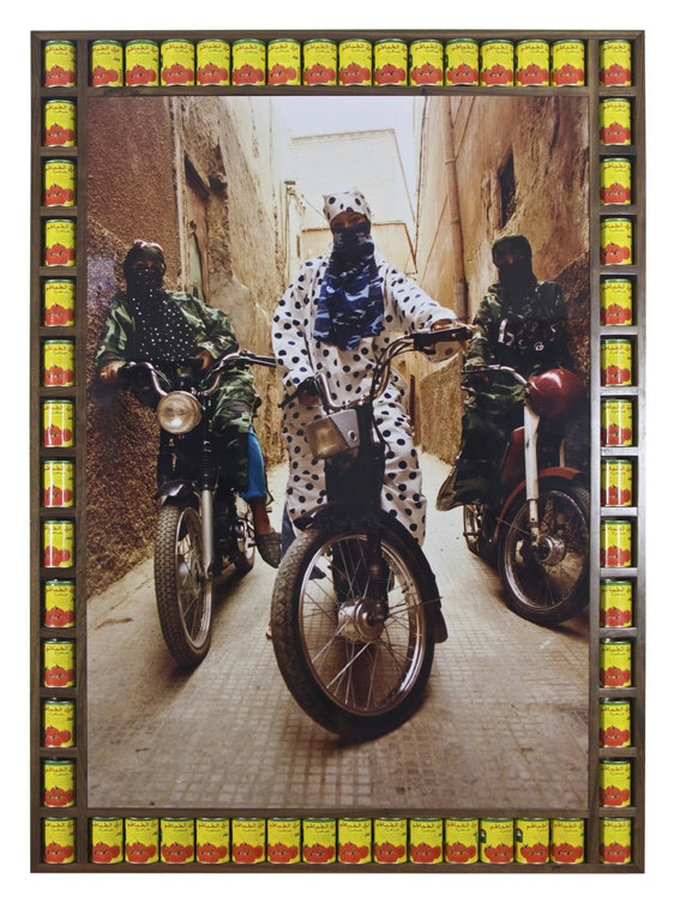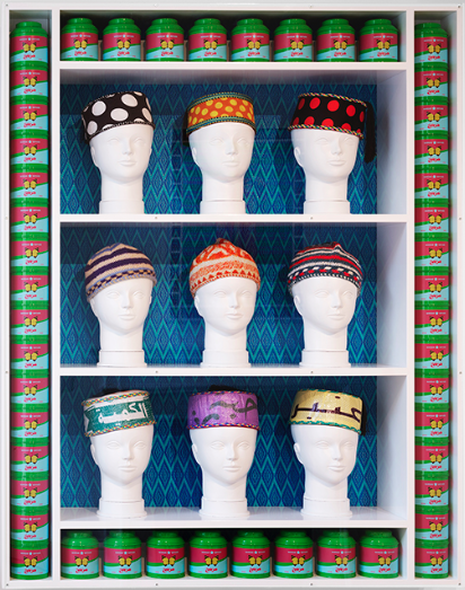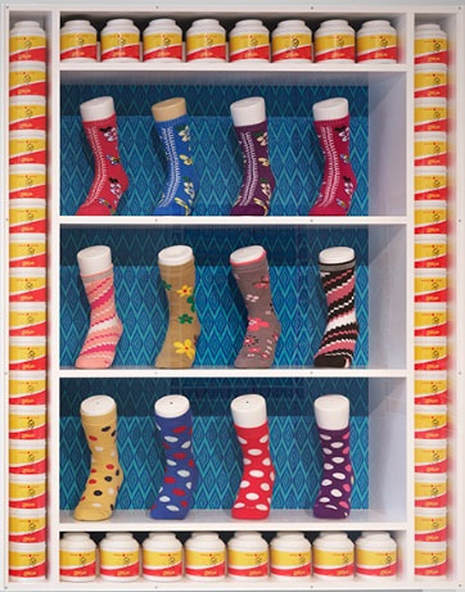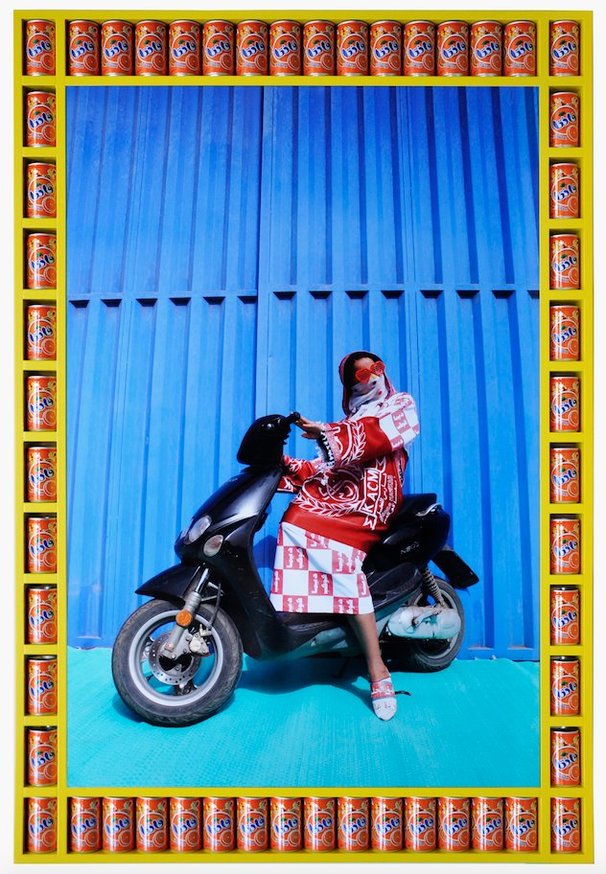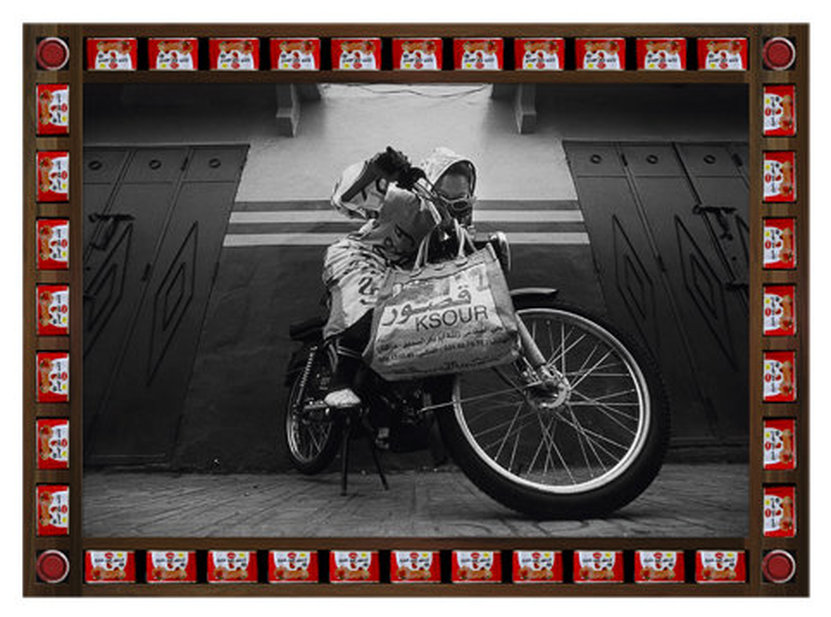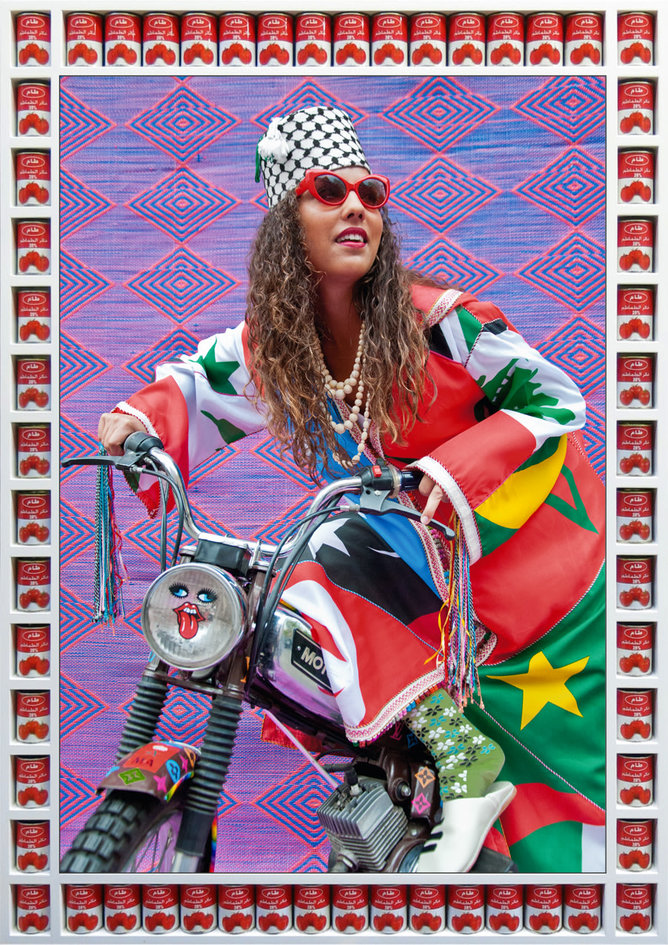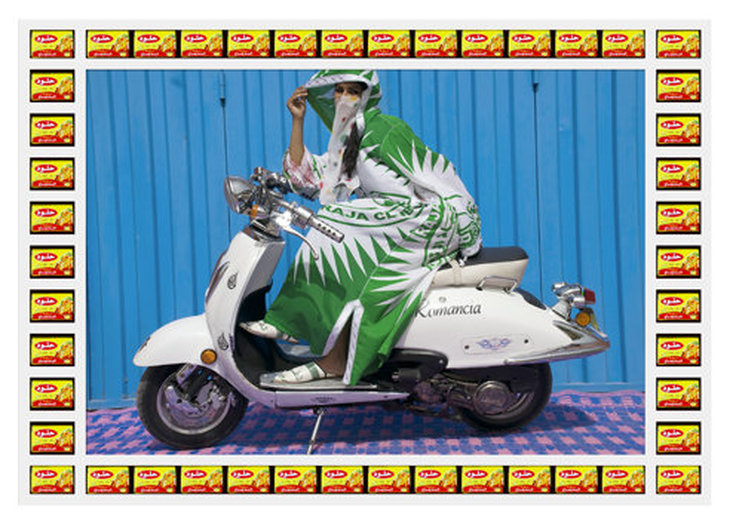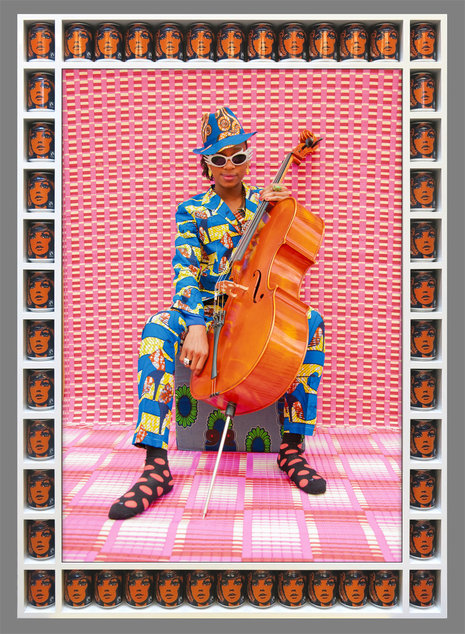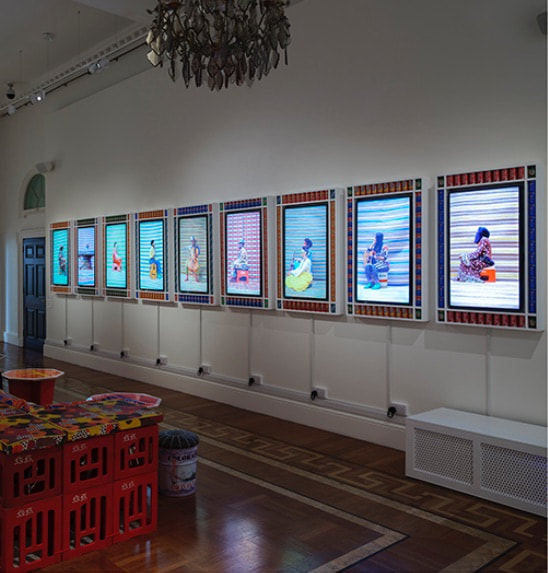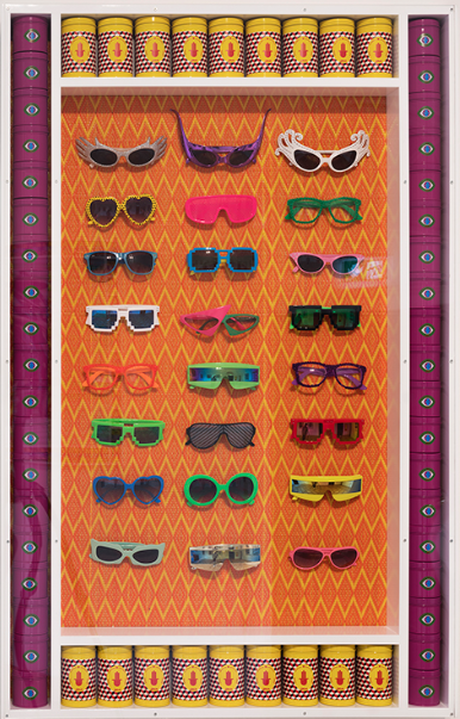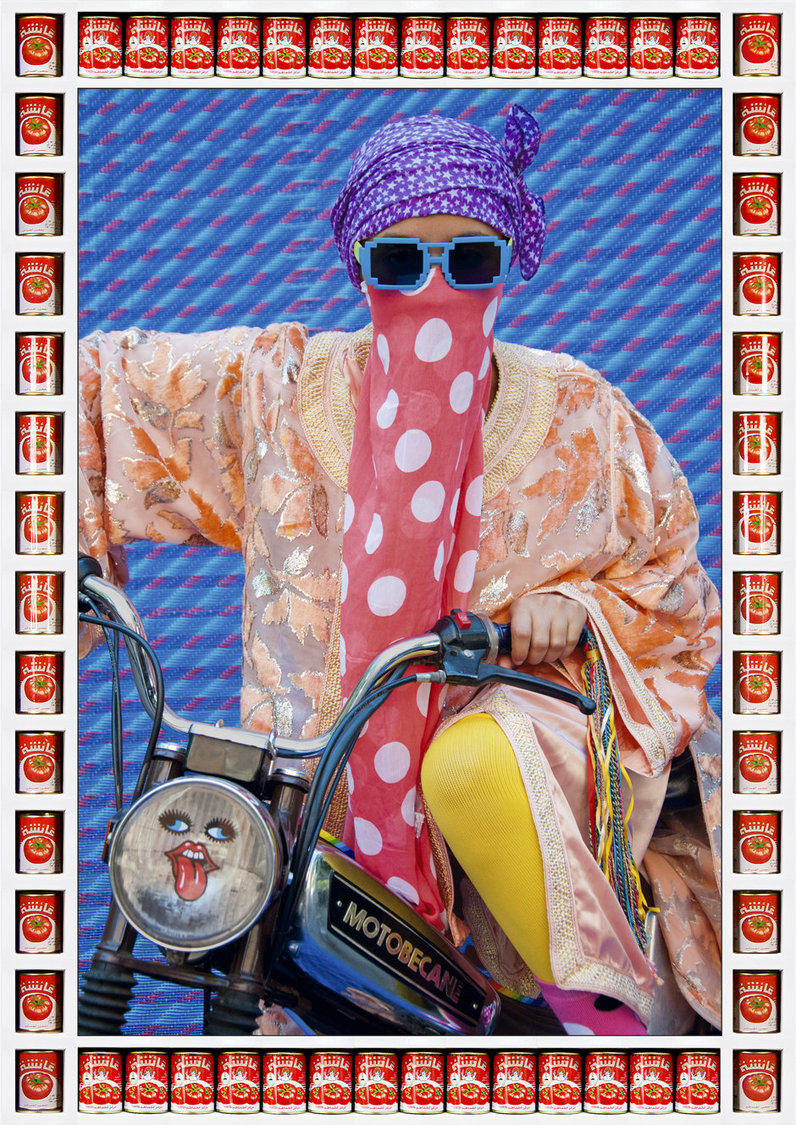Hassan Hajjaj on Art, Colour, Morocco,
Kesh Angels, Rock Stars, His Journey and Bringing People Together
Stepping into the exhibition La Caravane at Somerset House you are entering Hassan Hajjaj's vibrant world and going on a journey with him through his art.
Walking through the rooms of colour and energy, his friends, artists, musicians and a variety of characters adorn the artist's work, and the viewer is invited to join the festivities through his visual documentation that comes with a duality of being aesthetically beautiful and at the same time making us think about an array of issues from consumerism to identity.
Hassan Hajjaj shows a perspective of Morocco enchanting us with colour and music, showcasing a variety of subcultures intertwined and coming together through the power of art. His personal journey is an inspiration, a true soul of an artist.
Join the magical vibes of Hassan Hajjaj's work and the ongoing conversation of fusing art, design and fashion together and head to Somerset House to fill the winter sky with tints of Morocco.
As we sat down for the interview below, it was clear that Hassan Hajjaj cares deeply about his friends and bringing positivity and brightness to life.
My childhood was a happy memory, we didn’t have much money, but all I remember was bright sunshine, the sea, friends , football, going to the village in the summer for three months where my grandma was from, and where there was no water, no electricity, no toilet, so you had to get involved with everything from the day you got there. Now thinking about it, that has probably come out in my work, we didn’t have any toys or games, so everything we did we had to create in order to have toys or we would spend three days on the beach picking seaweed to sell it to get a bit of money to go see a movie. So it was a happy memory.
So you were probably a bit of an artist without realising it, you were creating from then
Well I would say, it’s survival and (yes) being creative
It’s funny because someone else asked me this a couple of days ago and I didn’t really think about it, but probably so, because from when I was born, well until the age of 14, I grew up in a house with my mum, my grandma, my aunty and my three sisters, so I was right in the middle, one would spoil me, one would hit me, one would be in the middle, and my youngest would probably say that I would beat them up or something. So it was probably from that definitely.
Well London in the beginning was difficult but then you know at that stage in your life you can adapt quicker and so you have to sort of find yourself within a new environment and new friends and a new culture, I think within a couple of years, three years, it sort of started to happen, and i became part of the London scene I suppose.
No I didn’t start in music. I came out of school with zero qualifications. I left school at 15.
So from there I tried a few jobs working as a gardener in a timber yard, in Woolworth, and it was like three months here, a week there, stuff like that, and it just wasn’t something I wanted to do. This one time, it was quite tough I didn’t have any money and I remember I had an interview for a job and I had enough money to get there by bus but I didn’t have money to get back, but I thought you know if I go there, you never know. It was a job for packing hats and I dressed up for the interview and went there, but when I had the interview, I knew I wouldn’t get the job and had to walk back home, which was about an hour’s walk and in that hour’s walk, I had to reassess what I wanted to do. And then, well, becoming unemployed for 6 years and within that 6 years I started to do little parties and stuff like that to survive.
It made me realise that I am not fitting in with this kind of stuff, you know with the jobs i was seeking, I wanted to work but it wasn’t what I wanted to do and it wasn’t easy to get a job, and the jobs I was getting were like dead brain jobs, nothing challenging.
And you had a lot of internal creativity
Probably, I think I did
I started a shop in 1984 selling my friend’s designs which I suppose was street wear, and at that time I was young, I was into clothes like everybody when you are younger and my friends were the same, so I opened up this small shop in the backstreets of Covent Garden.
There were stuff from my friends that were coming out of college in London and I was bringing stuff from New York and after a couple of years of opening I started to have ideas to make things under the name of the shop which became the label, so that’s really the influences.
Real Artistic People
Well we wrote a whole list and Real Authentic People was mentioned, but we went with Real Artistic People.
It’s probably all of that. There’s a part of it that comes naturally, there’s the thought of it, and also I am coming from that kind of thing, where I had the shop and I had to do the windows and displays, buy for the shop from different labels to make something, create from different aspects one look for example, so I think in my work it’s probably bits of all of that coming together.
I think definitely trying to highlight something for Morocco that exists and also to show the power of women in Morocco in that kind of way. The work, especially in social media kind of went off and I was shocked how far it went with social media, and I am proud that it has that element of strength for the women because that is important, but you know obviously the women I was taking pictures of, they already had a certain strength for me to take the pictures of them. I was thinking these are amazing women that I am working with. They have the strength already.
You are breaking down barriers of any preconceived ideas of what Morocco has to offer, and you are showcasing notions and ideas, and through your eyes we are seeing things, seeing a different narrative
I think growing up in London you understand how different cultures are thought of, so I am playing on this, and I am trying to put this kind of cinematic images and let the viewer decide what they think of that image and it could be half-half, somebody will read it in a positive way and others may read it negatively, but that’s the viewer. For me I am trying to play with this idea.

